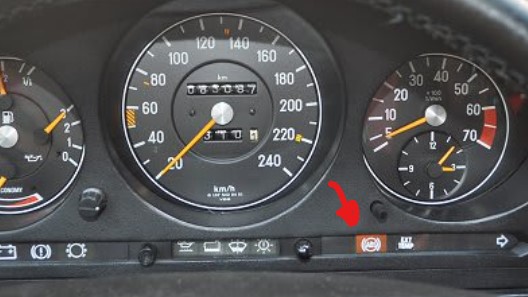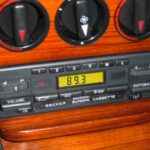The Mercedes R107, a classic SL-Class roadster, has earned a reputation for its timeless elegance and advanced engineering features. Among these features is the Anti-lock Braking System (ABS), a crucial safety technology designed to prevent skidding and maintain steering control during emergency braking situations. However, like any complex system, the ABS in the R107 can experience issues, leading to the illumination of the ABS warning light on the dashboard. In this article, we explore the reasons behind the ABS light coming on in the Mercedes R107 and the appropriate steps to address the issue.
Causes of ABS Light Illumination
- Sensor Malfunction: The ABS system relies on wheel speed sensors to detect individual wheel rotation and prevent locking during braking. When one or more of these sensors fail or become faulty, the ABS light is triggered.
- Low Brake Fluid Level: The ABS light may illuminate if the brake fluid level is low. A decrease in fluid level could be indicative of a leak or worn brake components.
- Faulty ABS Pump/Motor: The ABS pump or motor, responsible for regulating brake fluid pressure during ABS operation, can malfunction, leading to the ABS light activation.
- Broken ABS Wiring: Damaged or corroded wiring that connects the ABS components can interfere with the proper functioning of the system, causing the ABS light to illuminate.
- ABS Module Issues: The ABS module, the control unit that manages the ABS system, can experience electronic malfunctions, leading to the activation of the ABS warning light.
Diagnosis and Troubleshooting
When the ABS light illuminates on the R107’s dashboard, it is crucial to address the issue promptly. Diagnosing the cause requires specialized diagnostic equipment or the expertise of a qualified mechanic. Here are the general steps for troubleshooting:
- Visual Inspection: Conduct a visual inspection of the brake system and wiring for any obvious signs of damage or fluid leakage.
- ABS Sensor Check: Test the wheel speed sensors to ensure they are functioning correctly. Sometimes, the sensors may be covered in debris or have accumulated dirt, affecting their performance.
- Brake Fluid Level: Check the brake fluid reservoir to ensure it is at the recommended level. If low, inspect the brake system for leaks and address any issues promptly.
- ABS Module Scan: Utilize a diagnostic scanner to read fault codes stored in the ABS module. These codes will provide valuable insights into the specific issue affecting the ABS system.
Seeking Professional Assistance
Given the complexity of the ABS system and the potential safety implications, it is advisable to seek professional assistance when troubleshooting ABS light issues in the Mercedes R107. Authorized Mercedes-Benz service centers or experienced mechanics familiar with classic Mercedes vehicles are best equipped to diagnose and repair ABS-related problems.
Timely Repairs and Safety Considerations
Promptly addressing the ABS light illumination is crucial for maintaining the safety and drivability of the R107. The ABS system plays a vital role in preventing skidding and maintaining control during emergency braking, especially in adverse road conditions. Ignoring the warning light can compromise the effectiveness of the braking system, putting the driver and passengers at risk.
Conclusion
The ABS light in the Mercedes R107 serves as a vital warning indicator, signaling potential issues with the Anti-lock Braking System. Whether caused by sensor malfunctions, low brake fluid, faulty ABS components, or wiring problems, addressing the underlying cause is essential for maintaining the vehicle’s safety and performance. Owners of the classic R107 should prioritize timely diagnosis and repair by qualified professionals to ensure the longevity and reliability of their ABS system and, most importantly, their safety on the road.


